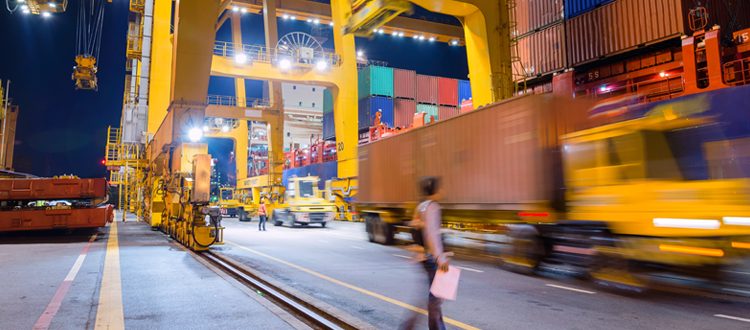Invisible Payouts: Removing Payment Friction for Contract Workers
It doesn’t matter what restaurant you go to—from the greasiest diner to the fanciest Michelin-starred establishment—the experience always ends the same way. When you finish eating, you’re left to wait for the server to bring your bill so you can settle up before heading home. Sometimes you have to wave your arm to catch the waiter’s attention, other times the server is awkwardly hovering in your peripheral vision. Either way, it’s an annoying process that takes unnecessary time and can often leave a bitter taste in your mouth—regardless of what you just ate. It’s one of those persistent problems that companies like OpenTable are attempting to tackle restaurant by restaurant, to the point where “dining and dashing” is totally acceptable.
The same thing happens when you take a cab. You get to your destination, fumble around in your wallet to find cash or a credit card, and then wait while the driver rings you through. It’s a small hassle, and one that you probably don’t really even notice—that is, until you take an Uber or a Lyft for the first time. This is because passengers never have to dig in their purse or pant’s pocket in order to complete their transaction. They simply open the car door and leave. As the leaders of the “invisible merchant payment” movement, these on-demand driving services handle all passenger transactions seamlessly through their mobile apps. Simply signup for the service, enter your preferred credit card information once, and the next time you exit an Uber of Lyft vehicle, your card will automatically be charged the corresponding amount, right before a receipt pops up in your inbox. It’s such a simple thing, but the impact on the passenger’s overall experience is enormous.
Invisible payments are popping up all over the collaborative economy landscape—Styleseat is currently offering early access to their new Express Pay system in salons, and there’s no fumbling for cash when DoorDash comes a knocking. All payments are handled in the background, entirely out of sight.
Not Paying is the New 1-Click Ordering
The quest for frictionless merchant payments has been going on for years. Just think back to Amazon’s 1-Click patent (filed in 1997). Designed to eliminate the arduous checkout process from online purchases, 1-Click was considered a major payment breakthrough at the time. Apple even licensed the technology from Amazon in 2000 in order to incorporate it into their iTunes, iPhoto, and Apple App Store experiences.
The only thing better than one click? No clicks. The merchant end of friction-free payments is rife with emerging technologies trying to tackle this task on various levels. PayPal introduced us to the notion of a payment being as easy as sending an e-mail back in 1998; since then, Square has given it a try with their Wallet product (which was sunset last year), and Starbucks has made mobile payments a foundational part of their checkout process. It’s becoming easier and easier to spend money, but what about the other end of the payments chain? What is being done to ensure invisible payouts to Lyft’s drivers, Doordash’s dashers, or any of the millions of other contract workers logging hours on behalf of the collaborative economy?
The Future of Payout Optimization
The emergence of the collaborative and on-demand economies—anchored by thousands of marketplace platforms—has done more than improve our food delivery options and ride share availability. These businesses have upgraded our expectations around how commerce will be conducted in the future. They have redefined “seamlessness” by virtually eliminating the friction associated with paying for goods and services. Not only do they make the act of the transaction easier, but they insulate all the parties from the trust and security considerations inherent to transacting anonymously. Thanks to this shift, the buyer no longer worries about whether or not the seller will receive payment for their goods or service. Conversely, the seller can deliver the service/goods without worrying whether the buyer’s payment method is valid or fraudulent.
The same train of thought now needs to be applied on the other end of the payment chain. In a standard employer/employee payment transaction, employees are paid on a regular schedule and, for most of us that use direct deposit, our paychecks simply appear in our bank accounts every two weeks. As an employee, we’re not expected to do anything to ensure our payment is made… other than our job duties, of course. The employee doesn’t have to worry about deduction or any other tax reporting, that’s what payroll companies are for. So what’s the corresponding solution for workers in the new collaborative economy? Who’s helping them manage their taxable income and keep track of business related expenses? It’s quite possible these workers would prefer to keep their business income and expenses separate from their regular household bank account; are marketplaces able to accommodate this need and assist their workers with the necessary tracking and reporting? And what about different global contractor regulations? While employees can rely on payroll companies to keep things straight, independent workers are left to struggle with these issues on there own.
Frictionless Worker Payouts
At Hyperwallet, our clients tell us who to pay and how much, and we coordinate all the logistics to ensure the payment is delivered in full and with total reliability. What’s more, like a payroll company, we ensure that your workers have the ability to track and manage expenses and taxable income. It’s not terribly different than the way you might drop a package with FedEx and entrust them to deliver it. We don’t need to dictate whether it’s delivered by plane, train, or automobile, nor do we need to tell FedEx whether the recipient wants the package delivered to their doorstep or if they want to pick it up. We leave that to them to coordinate and fulfill. Through a combination of white-labeled interfaces and a comprehensive suite of APIs, Hyperwallet can interact deeply with any worker or payee while simultaneously safeguarding the integrity of the user experience on behalf of the company. As this new economy continues to flourish, companies will need solutions like this in order to ensure the lifeblood of their marketplaces— the providers, sellers, hosts, drivers, couriers, etc.—are capable of working and earning seamlessly.
Today, we’re one step closer to invisible payouts at Hyperwallet thanks to the release of our Worker Payout APIs. Sign up to learn more.


